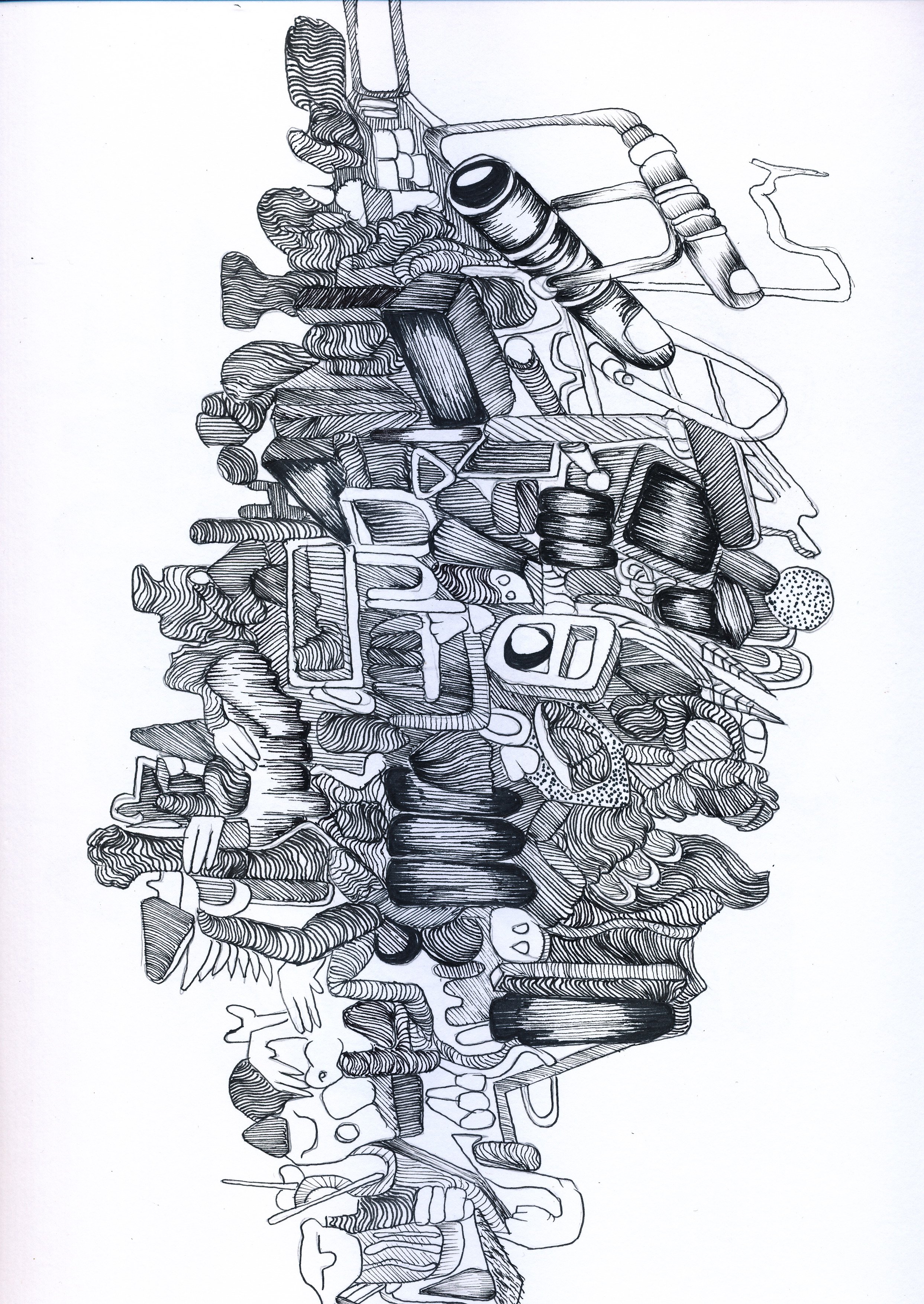
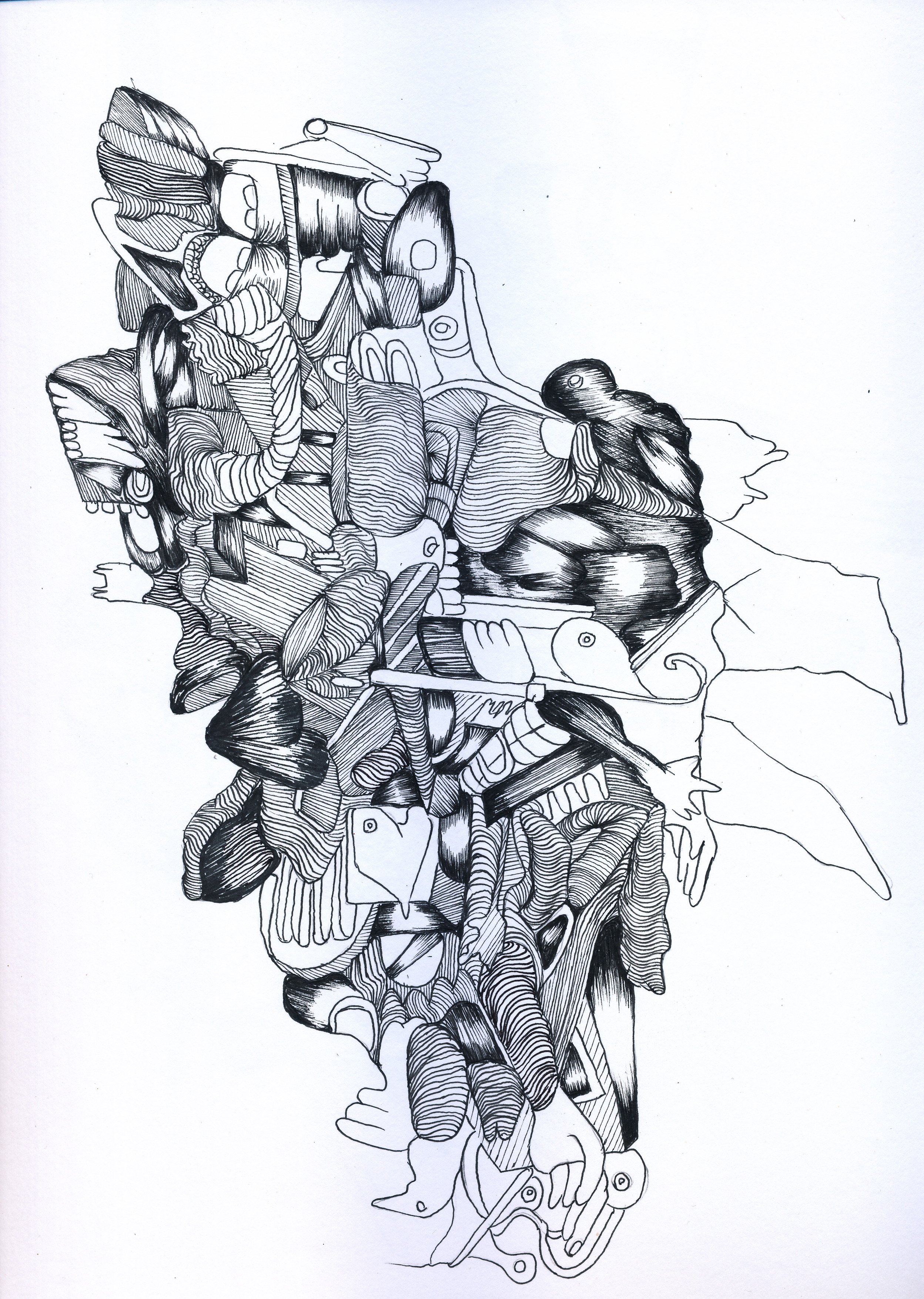
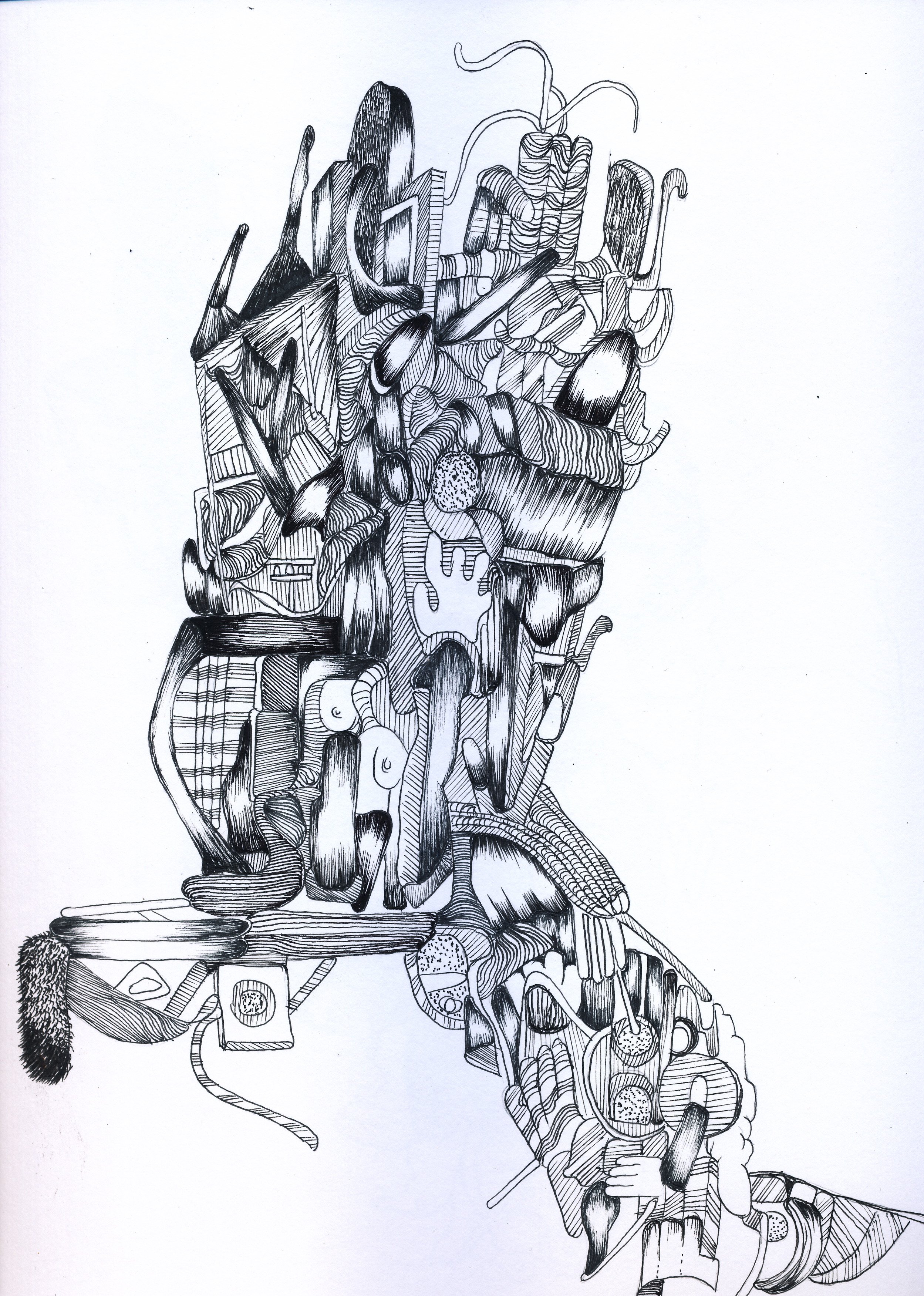
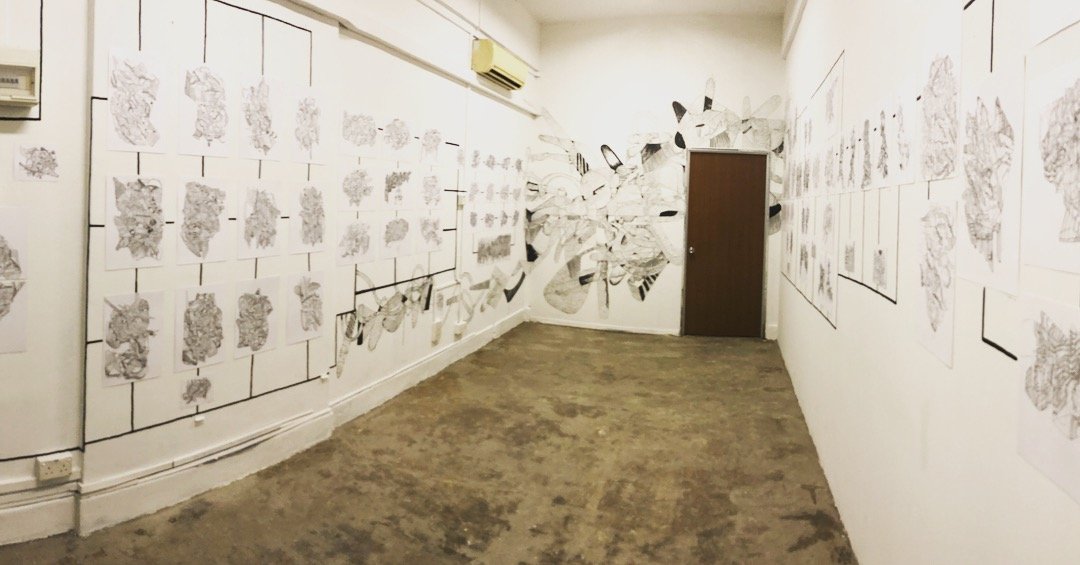
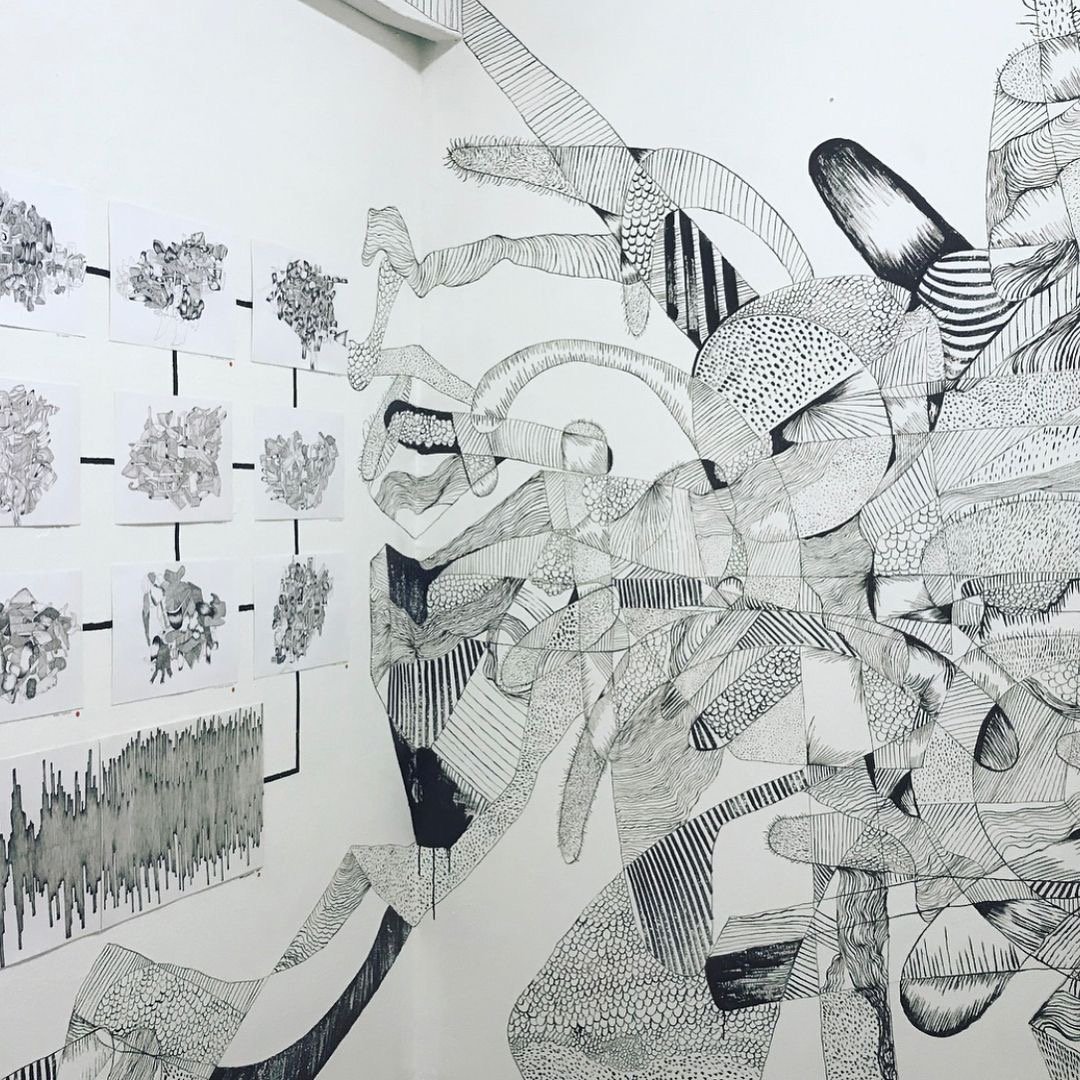
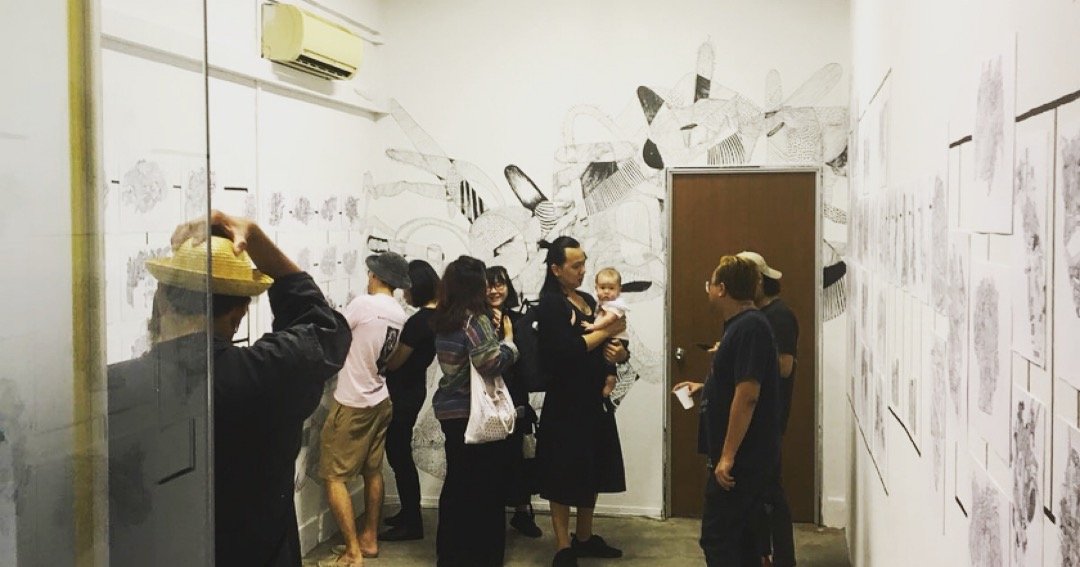





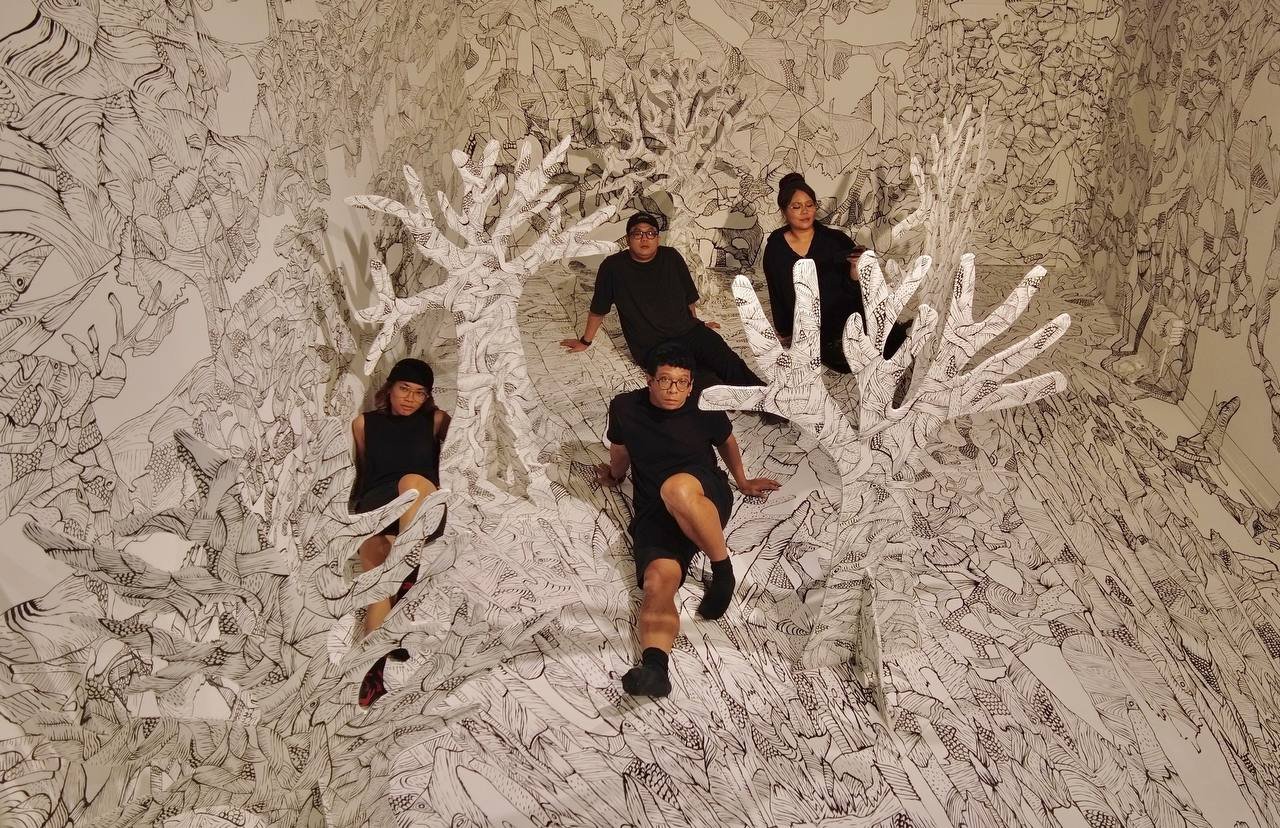


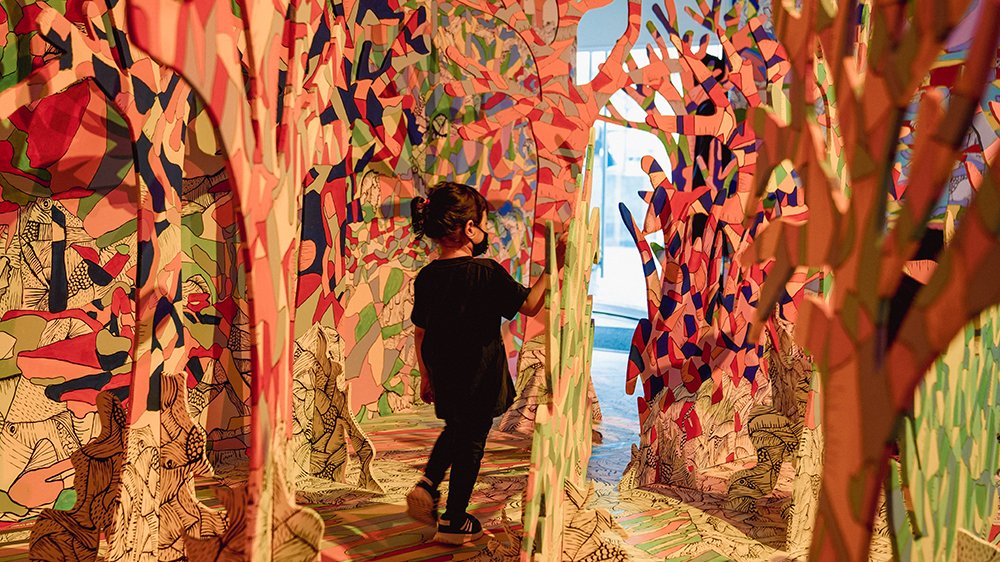
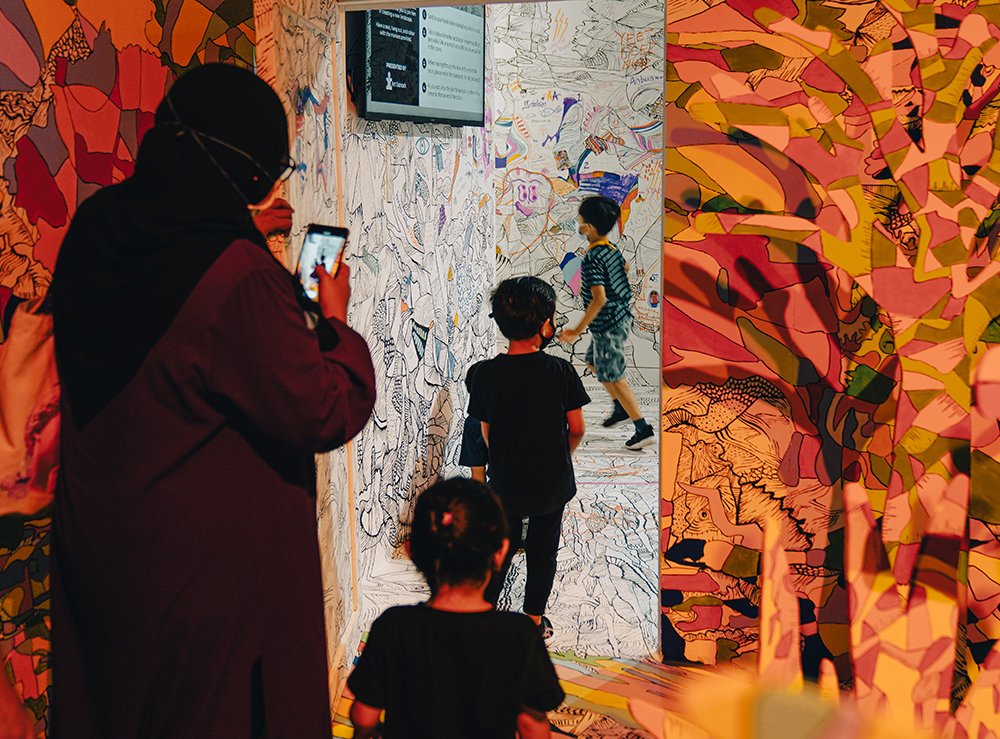
ARTIST PROFILE
Bridging the visual art and performing arts communities, Rizman Putra (b. 1978, Singapore), is known for his live performances, music shows with glamorous costumes, large-scale intricate paintings and his role as an avid theatre practitioner. Throughout his career he has had the chance to exhibit overseas as well as win prestigious awards like; ‘Life! Theatre Awards for Best Sound Design’ with Tiramisu and Philip Tan for Desire At The Melancholic String Concert in 2012, 'President’s Young Talents Award’, ‘JCCI Award for The Arts (Kill Your Television)’ in 2005 and ‘Best Bachelor Of Arts Program candidate’ Royal Melbourne Institute of Technology 2003 1.
Rizman started his journey at the young age of 17 in 1995 as he pondered his choice between pursuing engineering at Poly or attending art school at LASALLE College of the Arts. He decided on LASALLE, where upon being admitted he dove right into the arts with drawing, painting, pottery, graphic design and such. While at LaSalle, he made a choice to major in painting; a decision he dubbed his entrance into the arts. While studying at LASALLE, he immersed himself in the culture as he navigated the very exciting and tumultuous waters of art school. From dumpster diving under HDB blocks looking for interesting materials to understanding the importance of technique and basics in live drawing lessons, Rizman left no avenue unexplored. He believes in grabbing opportunities and learning as many new things as possible in order to keep moving forward. During his time at LaSalle, Rizman also explored other avenues in the arts such as theatre by attending movement lessons with his peers, and of course, his debut as a musician. Goofing around with a guitar in the studio with his fellow classmates and jamming together resulted in the formation of the iconic band, Tiramisu. Known for their extravagant costumes and vibrant musical experience, Tiramisu has been active in the Singapore music scene since the late 2000s.
An aspect that had also greatly influenced Rizman’s creative endeavours was his 80s upbringing. 80s television was a friend that kept him company throughout his sheltered childhood. As he had lived in a rough neighbourhood of questionable characters, playing outside was a prohibited activity. However, the silver lining of not being able to play outside was that he was pushed to conjure up narratives in his mind. With 80s media to get his creative juices flowing, he and his siblings would indulge in impromptu skits made in their rooms. Celebrities like Richard Simmons, Jane Fonda, P. Ramlee and Michael Jackson all played a part in forming Rizman’s tastes in music and fashion. Early morning Aerobics programs were also a source of inspiration due to his mother’s avid hobby of leading the neighbourhood makciks’ aerobic exercises in her living room. He was fascinated by people exercising, how they stretched and moved. This was where his interest in the texture of the leotard, spandex, and gaudy colours was born.
Everyone who is aware of the artist’s work has heard of the infamous Manic Jango. Over the course of serving national service, his tiny sketchbook became a companion of sorts. Through these pages, Rizman Putra conjured up ideas for performances. These pages brought to life the character of ‘Manic Jango’, a tragic superhero who would soon become the persona we witness when we see Rizman Putra in action and all his spandex glory. Manic Jango became a part of him, a mental security blanket of sorts, that allowed him to temporarily break out from his introverted self thus leading him down the path of performance. After 10 years of performance, in 2018 Rizman’s interest in drawing was sparked again after receiving a call from Seelan Palay, the founder and Curator of CODA culture, about putting up a solo show at CODA Culture. While faced with this invitation, Rizman decided this would be his opportunity to dive right back into his roots again; by putting up over 100 drawings for the series “Labyrinth of Things” 2. This series set the pace and trajectory for the many visual-based works that would follow such as ‘Chonteng’ and ‘Immemorial’.
As Rizman continues to be involved in the art ecosystem of Singapore, he consistently exercises his flexibility of being a multi-disciplinary artist and marries his love for the performing arts and visual arts harmoniously.
References:
1 List of achievements and awards from artist’s public Curriculum Vitae (https://www.rizmanputra.com/cv.html)
2 Putra, R., Kapur, S., Ashreen , K., Ng, J., Cantarella, C. K., d'Almeida, R. I. (2022, September 2). 2nd Interview with Rizman Putra. personal.
CONTRIBUTORS
- Carla Karishma Cantarella
- d'Almeida Ruth Isabelle
- Jassilyn Ng Jia Ling
- Kapur Shuchita
- Kysha Ashreen Amir Singh
Manic: A peek into the life of Rizman Putra
In this artwork analysis we will be covering three bodies of work that Rizman Putra created over several years of his artistic practice. The three works are; The labyrinth of Things (2018), Chonteng (2019) and Immemorial (2022). These artworks were selected as we found them to be significant to the evolution of Rizman’s visual art practice. There were several variables that influenced Rizman’s practice such as his 80’s upbringing, solitude, obsession and self-healing. We will attempt to cover the inspiration behind each work, and the events that lead to their creation. To begin, we shall cover the first artwork Labyrinth of Things.
The creation of the work, Labyrinth of Things, was birthed from one sentence.
“Rizman you’ve got to commit to your lines.”
That was what Ms Natalie Hennedige, the Founder and Artistic Director of Cake theatre, said to Rizman Putra during rehearsals when Rizman was struggling to memorize his lines 1. This comment had planted a seed in his psyche. He would often doodle along the sides of his scripts which led him to wonder what would happen if he had just committed to the lines on his paper instead. Coincidentally Seelan Palay, the Founder and Curator for CODA culture, had reached out to Rizman at this time to ask if he was interested in making a solo exhibition. Thus marking Rizman’s return to his artistic practice after 10 years of performance and performing arts. Itching to return back to drawing, Rizman had decided to commit to 100 ink drawings of variable sizes in a span of 1 to 2 months.
When you view this series of works in its first iteration, you can’t help but be overwhelmed by the small room being covered with intricate overlapping lines that mingle together, alongside multiple individual drawings. Every bold line slowly transitions into other fundamental elements like dots and circles, or in some instances hair. Each element is perfectly contained but eventually morphs into one complete amalgamation. If you study these systems of drawings long enough, you will start to notice the organic nature of the work. Several drawings may even draw some semblance to animals. This was because Rizman drew a lot of his inspiration from nature documentaries. Which helped define one aspect of his practice, obsession. He would lock himself in his studio and spend several hours watching documentaries, drawing lines and shapes that struck him, letting the lines communicate with each other. In his solitude, he saw the connection between his performance and his drawing background. Seeing how the body engages with the work, the movement it creates and the endurance it takes to complete large works. It was a form of meditation and healing after many years of being vulnerable on stage, a change of pace that was necessary. This repetitive and constant movement has truly been reflected in his drawings.
Labyrinth of Things was launched in CODA culture from the 30th of June to the 7th of July 2. On its opening day Rizman noticed an empty wall in the gallery and found this to be unacceptable. It became a gateway to his next big project where not one square inch of the space would be left unmarked, The Chonteng series.
Chonteng started as a vision, one where Rizman imagined an entire space being transformed into his sketchbook. A sketchbook where he wasn’t restricted to the corners of the pages. Over the course of a residency in Paris in 2019, Rizman was inspired by the use of Chinese ink as a medium. The flow and the versatility of the ink adding to the organic nature of his doodles played a big part in the realization of his vision for ‘Chonteng’. In Paris, Rizman built a routine for himself. Every day from 8 AM to 6 PM, he would just create works using Chinese ink and soon these would be the drawings that became the basis of ‘Chonteng’.
In order to bring this vision to life, he immediately decided to take action by calling up Shaza Ishak, managing director of Teater Ekamatra 3. He discussed this idea with her and asked if he could make use of space at the Aliwal Studio to bring this cult of creatures he had envisioned to life. Once Rizman got the green light, he got to work immediately and that was the beginning of ‘Chonteng: The Cult of Creatures’. With three weeks on hand and two assistants, the idea began to become a reality 4. This plethora of visuals that began to fill up the space was more than just mere shapes. These were characters, tiny beings full of life that were moving around the walls and the floor, communicating and mingling with one another. Rizman has this particular system of drawing. This collective of shapes may look random at first but when you look closer, you can almost see this large group of tiny minions or creatures somewhat communicating with each other like they’re all part of a large web. Empty rehearsal space with blank white walls now telling volumes as it was transformed with these abundant characters, each with their own unique personality. Unique in a way that to every onlooker, the doodles may appear to remind them of something different, from animals to plants and maybe even the stuff of our dreams. Rizman left a square on the floor in the middle of the room, empty prompting a participatory element. He handed the audience members markers, each labelled with a shape such as circles, dots, lines and so on 5. The viewer had now become a contributor as everyone made their way around the room, leaving their own mark. For Rizman, this represented the act of letting go and the acceptance of the letting go. Much like in ‘Labyrinth of Things’, this project was a meditative and healing process for him. And much like how monks blow away their intricate mandalas after having spent so much time on them, Rizman too let go of his creation after letting all of him out on stage and leaving it to the masses.
Continually inspired, Rizman finds that in the process of art-making, he can tap into anything and everything around him for ideas. Whether it be performance, visual arts, music or even teaching, it’s possible to find inspiration anywhere. On the set of a theatre rehearsal, he noticed a tree prop and began to wonder what it would be like if this tree were to be taken out of this particular space and placed elsewhere. A thought that began with the location of a tree would soon become the bedrock of another project, ‘Immemorial’.
Right out of the depths of his imagination, ‘Immemorial’ was a vibrant dream, a colouring book come to life. Rizman has expressed that he wanted his viewers to encounter a tree as mentioned before. However, he wanted them to encounter a magical tree that led them to a more enchanted realm. So when viewers first entered the room in Gillman barracks, they were greeted by a mesmerising sight of a bright, lustrous and flamboyant forest. As they continued to venture through this colourful forest they will eventually encounter a very juxtaposing room. A room devoid of any colours but filled with his trademark black-lined drawings. Rizman had created the room-sized colouring book where he wanted his audience to take part in the experience by filling the room with colours of their own.
When asked what made this work memorable for Rizman he mentioned, “Something about watching a family enter the space and creating a beautiful memory together really spoke to me.” 6
In his eyes, being able to create this opportunity for others to form sentimental moments like this really fulfilled the purpose of his work. In a way, his work initially served a self-serving purpose, it allowed him to meditate on his thoughts and feelings. It would be difficult at first, but once he committed at least 15 minutes into the beginning of his process, everything will begin to ebb and flow. He could focus and reflect but once his work was to be passed on to his audience, he lets everything go. The work is now in their hands to manipulate and/or interpret. They are free to be present.
To conclude, Rizman’s practice really demonstrates the ideal of resilience and dedication. Even though he credits his rigour and discipline to his theatre background, it is fair to say that both his visual and performancing arts background possessed this resolve to commitment. He skilfully uses his art to draw out parts of himself for his audience. He was not afraid to be vulnerable around his material and used that to not only better himself on a personal level, but as an artist as well.
References:
1 Putra, R., Kapur, S., Ashreen , K., Ng, J., Cantarella, C. K., d'Almeida, R. I. (2022, September 2). 2nd Interview with Rizman Putra. personal.
2 The Labyrinth of Things. Singapore Art & Gallery Guide | Art Events & Exhibitions in Singapore. (2018, June 28). Retrieved October 18, 2022, from https://sagg.info/event/the-labyrinth-of-things/
3 Putra, R., Kapur, S., Ashreen , K., Ng, J., Cantarella, C. K., d'Almeida, R. I. (2022, September 2). 2nd Interview with Rizman Putra. personal.
4 Putra, R., Kapur, S., Ashreen , K., Ng, J., Cantarella, C. K., d'Almeida, R. I. (2022, September 2). 2nd Interview with Rizman Putra. personal.
5 Bakchormeeboy, Bakchormeeboy, & N. (2019, April 23). Preview: Chonteng by Teater Ekamatra. Bakchormeeboy. Retrieved October 18, 2022, from https://bakchormeeboy.com/2019/04/23/preview-chonteng-by-teater-ekamatra/
6 Putra, R., Kapur, S., Ashreen , K., Ng, J., Cantarella, C. K., d'Almeida, R. I. (2022, September 2). 2nd Interview with Rizman Putra. personal.
